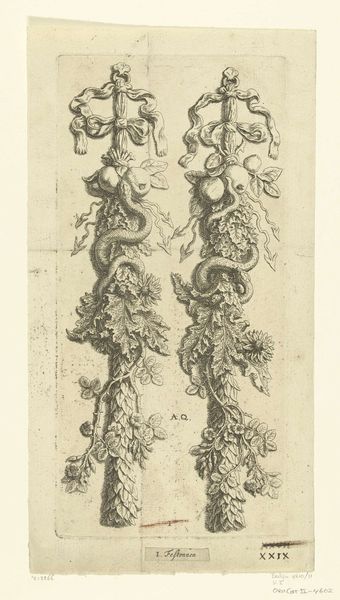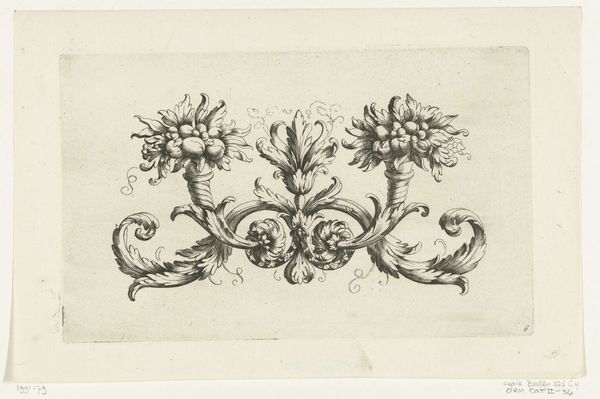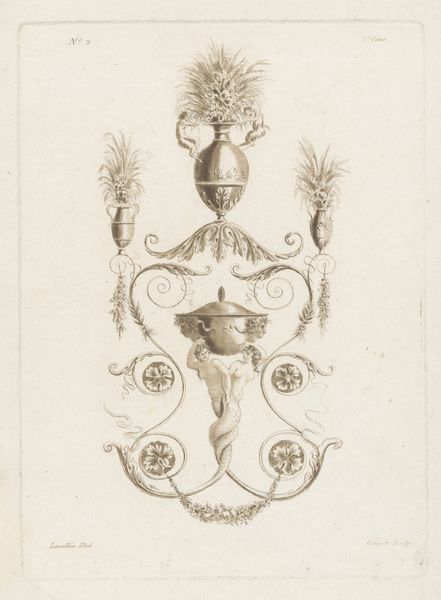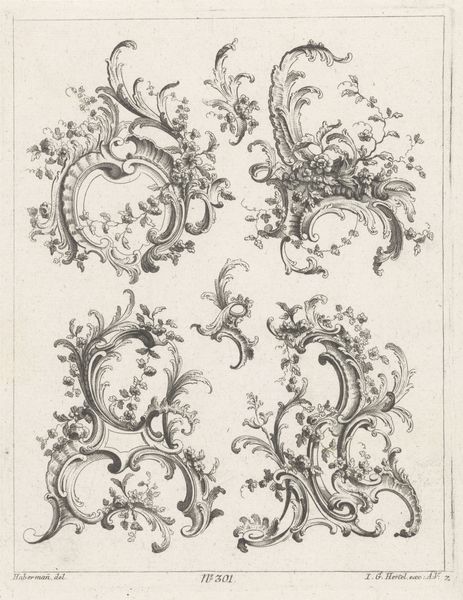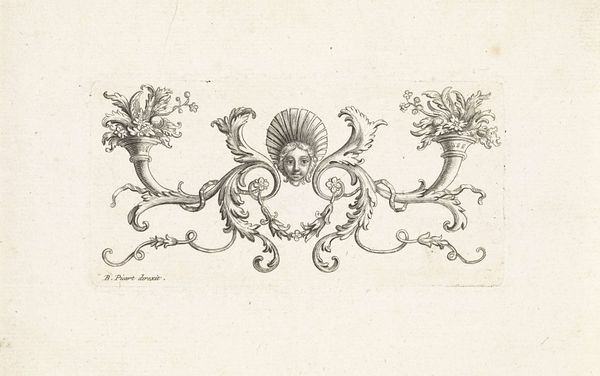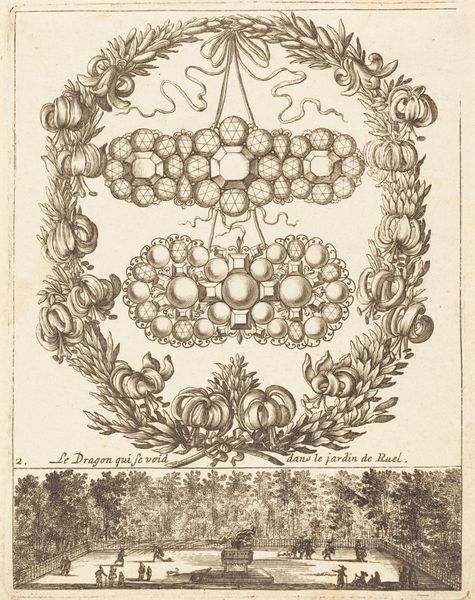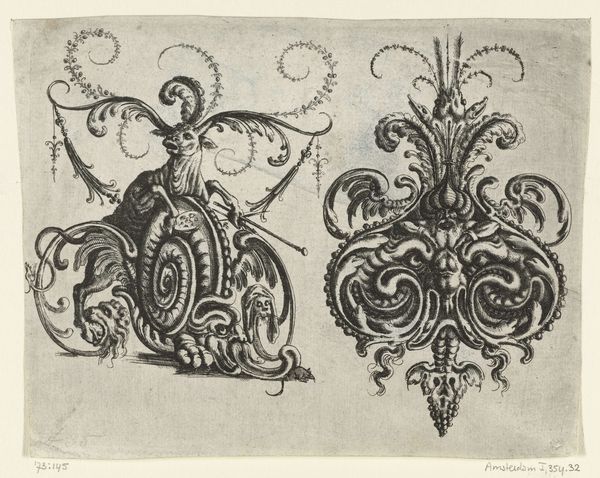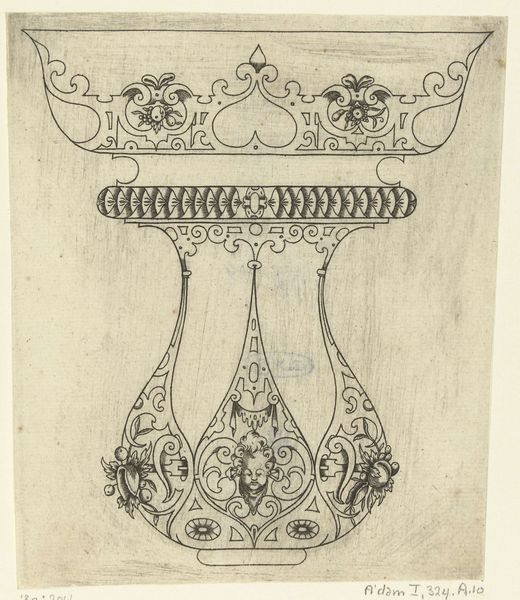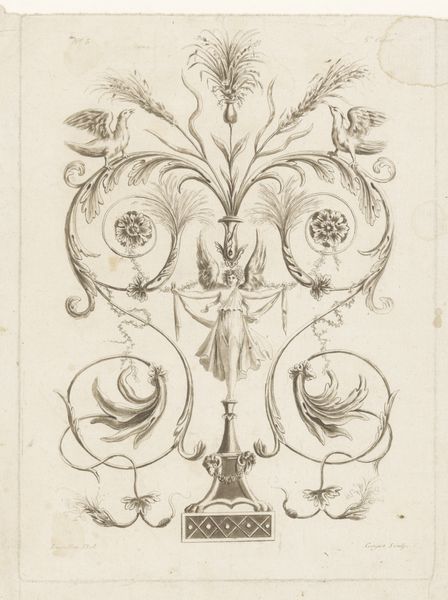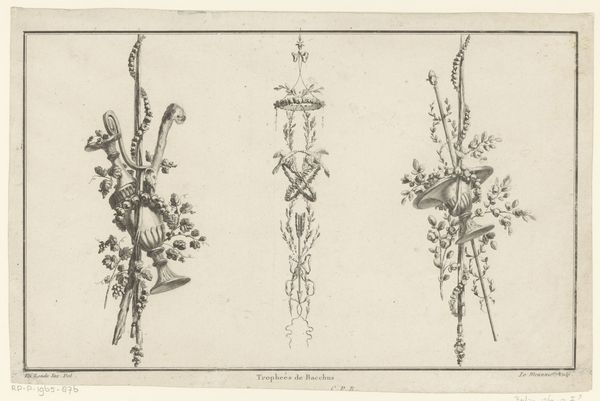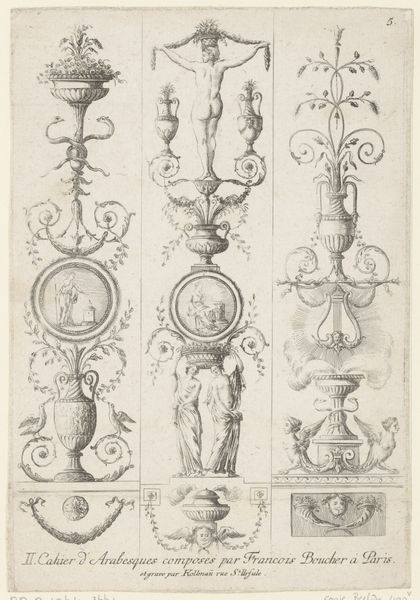
print, engraving
#
baroque
# print
#
pen sketch
#
decorative-art
#
engraving
Dimensions: height 250 mm, width 252 mm
Copyright: Rijks Museum: Open Domain
Curator: Look at this beauty. What a flight of fancy! Editor: At first glance, it seems…unnecessarily ornate. A bit top-heavy, almost precarious. Curator: But isn't that the point? This is “Ontwerp voor een olie-en-azijnstel,” or "Design for an Oil and Vinegar Set," made sometime between 1738 and 1749 by Gabriel Huquier, rendered in engraving. Think of it as Baroque exuberance pushing the boundaries of functional design. Editor: The grape motif is heavy-handed, wrapping around what appears to be blown glass forms… It speaks of excess. Almost like these objects are dripping with status, not oil. Curator: True. Huquier wasn’t just illustrating utility, but the theatrical potential of dining. It’s the era of Versailles distilled – or should I say, infused! – into miniature form. Consider the sinuous curves. Every element is poised, reaching, desiring. Even the line work in the engraving adds a sense of nervous energy. Editor: The eye never rests. However, in semiotic terms, we might see the grapes not simply as decoration but as symbols of abundance, Bacchus, even potential excess – all themes deeply embedded in Baroque sensibilities. Do we think this went beyond the design? Curator: Whether it materialized as a “real” oil and vinegar set is a wonderful question. Either way, this print preserves a moment of pure creative indulgence. Huquier’s work, after all, lived at the intersection of art and design. It gave rise to dreams – literal tableaus – that someone could have lived and dined amongst. Editor: I suppose it provides a framework to look at these things with the perspective of excess, perhaps even enjoyment, more than functional necessity. Curator: Indeed, a toast to extravagance, cleverly captured in ink.
Comments
No comments
Be the first to comment and join the conversation on the ultimate creative platform.

